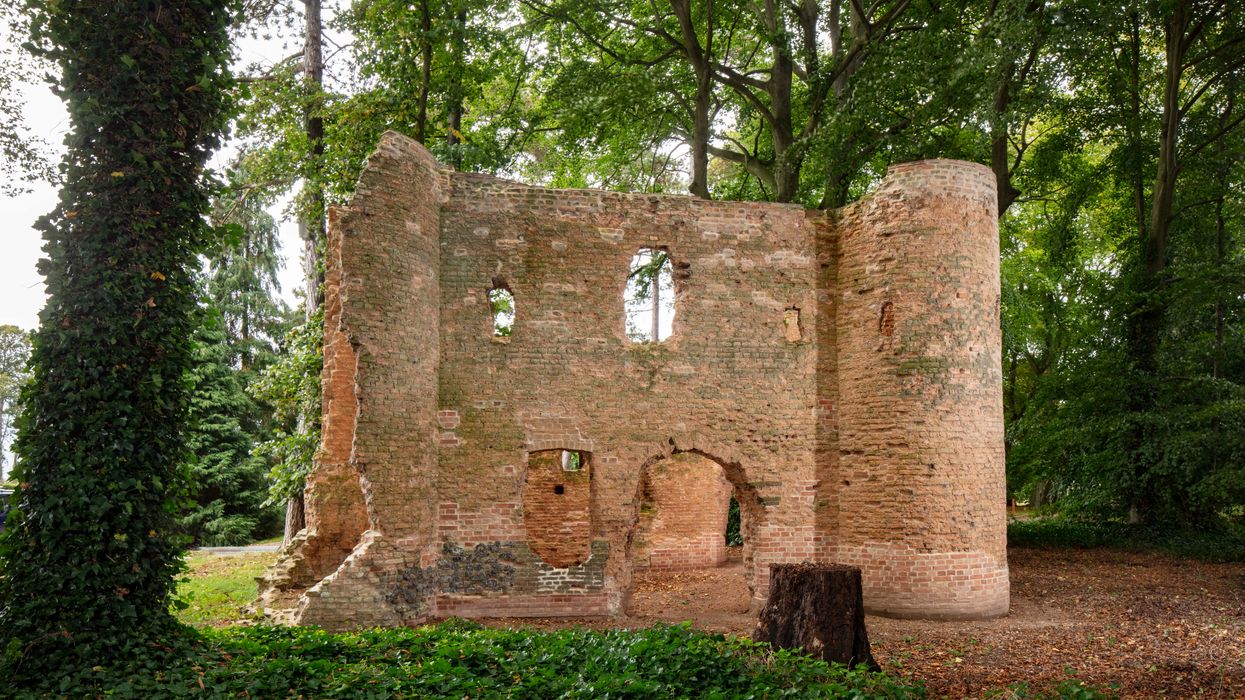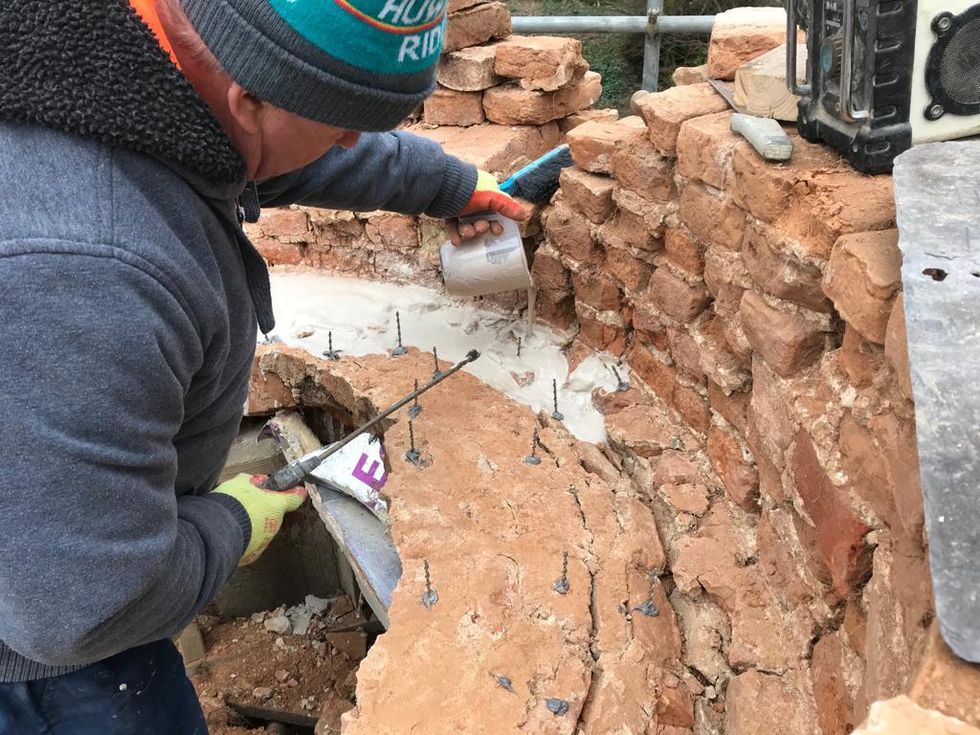
A miniature castle built by a soldier who inspired a character in William Shakespeare’s plays has been saved from collapse.
Sir John Fastolf was immortalised in caricature by Shakespeare as the cowardly knight Sir John Falstaff in Henry IV parts one and two and in The Merry Wives Of Windsor.
The real Fastolf served three English Kings – Henry IV, V and VI – and fought in the Hundred Years’ War.
He invested much of his wealth in English estates, and in 1437 built Drayton Lodge in Norfolk
The Grade II* listed brick structure, which had fallen into disrepair, was added to the Heritage at Risk Register in 1998.
A Historic England grant funded £11,000 for the repair of the scheduled monument and work has now been carried out with local developers Hidden Talents Homes to repair the building.
Some brickwork was replaced, using existing bricks where possible, with the remainder specially commissioned from a firm in Sudbury in Suffolk to match the original historic bricks.
Vulnerable sections of the structure were reconstructed with hidden stainless-steel pins and straps for additional support.
Vegetation was removed from the walls and the wall tops were repaired to protect them from weathering.
James Albone, inspector of ancient monuments at Historic England, said: “Drayton Lodge tells an important story about Norfolk during the 15th century and the life of Sir John Fastolf, a fascinating character who was immortalised in caricature by William Shakespeare.
“It’s wonderful to be able to remove this historic site from the Heritage at Risk Register after over 20 years.
“We’ve been delighted to work with Hidden Talents Homes on this project.
“Thanks to their dedication and enthusiasm, people who live, visit and work on the Drayton Lodge estate will be able to learn more about its remarkable past.”
Conservation architect Ruth Brennan said: “I enjoyed working on this miniature castle, which has been in a poor state for many years.
“Despite the challenges of the lockdowns and the difficulties getting the handmade pink bricks, the masons at S&L Restoration Ltd did an excellent job.
“The ruin will continue to be a fascinating glimpse of the history of Drayton for many more years.”
Drayton Lodge is an early example of the use of brick construction in England and is contemporary with Sir John Fastolf’s larger creation of Caister Castle near Great Yarmouth.
The lodge has been described as a ‘plaisance’ – pleasure ground – a hunting lodge or a strategic lookout post.
It was probably originally conceived as a small fortified manor, Historic England said.
Constructed of soft, pale red brick, Drayton Lodge now stands to two storeys.
Evidence suggests that it was originally built to three storeys and also shows traces of a large fireplace in the west wall, a garderobe – private room – and a staircase.
After Fastolf’s death in 1459, Drayton Lodge was acquired by the Paston family, one of the most influential families in East Anglia.
In April 1465, the Duke of Suffolk, who had previously contested Fastolf’s ownership of the land at Drayton, began to assert claims to the manors of Drayton and nearby Hellesdon, by legal means and then later by force.
As a result, Drayton Lodge was left in ruins.
Later, it was possibly used as a shelter for warreners and shepherds.
By the 18th century it was thought to be a recently built decorative folly.
















